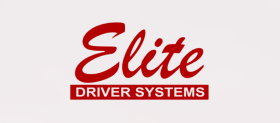Factoring vs. Traditional Financing: Which is Best for Trucking?
When it comes to the trucking industry, cash flow can determine whether a business thrives or simply survives. With expenses piling up and invoices waiting to be paid, fleet owners are often stuck at a crossroads: should they rely on traditional financing methods or consider factoring as a potential lifeline? Today, we’ll delve into the ins and outs of both options, weighing their pros and cons like freight on a balance scale. Whether you’re an owner-operator looking for quick access to funds or managing a larger fleet in search of sustainable growth strategies, understanding your financing choices is crucial.
Introduction to the Trucking Industry
The trucking industry is a vital backbone of the economy, transporting goods across vast distances and keeping shelves stocked. With growing demands for quick deliveries and rising operational costs, many trucking companies find themselves in search of effective financing solutions. Traditional methods often come with red tape and lengthy approval processes that can hinder cash flow at crucial moments. Enter factoring—a financial strategy gaining traction among truckers looking to bridge the gap between invoicing and receiving payment.
But what exactly is factoring? And how does it stack up against traditional financing options? As we navigate through this landscape, we’ll explore both approaches to help you make informed decisions for your business’s needs. Whether you’re an established fleet or a budding owner-operator, understanding these financial avenues could be key to fueling your success on the road ahead.
What is Invoice Factoring?
Invoice factoring is a financing solution that allows trucking companies to access cash quickly by selling their unpaid invoices. Instead of waiting for clients to pay, businesses can receive immediate funds from a third-party firm known as a factor. This is what we do at Elite Driver Systems.
The process is straightforward. When a trucking company completes a delivery and bills the customer, they can sell this invoice to the factor at a discount. In return, the factor advances most of the invoice amount upfront.
This method helps maintain cash flow and meet operational expenses without delay. It’s particularly beneficial in an industry where payment terms can stretch out for 30 days or more.
While it provides quick liquidity, it’s essential to understand the fees involved and how they impact profitability. Each situation is unique, so evaluating options carefully is crucial before making any decisions regarding financing strategies.
Pros and Cons of Invoice Factoring for Trucking Companies
Invoice factoring offers several advantages for trucking companies. First, it provides quick access to cash. Trucking operations often face delays in receiving payments from clients. Factoring allows businesses to receive funds almost immediately after delivering services.
Another benefit is improved cash flow management. Companies can use the immediate funds to cover operating expenses like fuel and payroll without waiting weeks for invoices to be paid.
However, there are drawbacks to consider as well. The fees associated with factoring can add up, cutting into profit margins over time. Additionally, relying heavily on this method may lead to a cycle of continuous dependency on external financing.
Businesses should also be mindful of how their customers view factoring relationships. Some clients might prefer dealing with companies that manage their accounts receivable internally rather than outsourcing them through a factorer.
Traditional Financing Options for the Trucking Industry
The trucking industry relies heavily on various traditional financing options to maintain operations and grow. One common method is bank loans. These can provide substantial capital for purchasing trucks or expanding fleets, but they often come with lengthy approval processes.
Another option is equipment financing. This allows companies to secure funding specifically for vehicles and machinery. Payments are generally made in installments, which helps manage cash flow.
Leasing is also popular among trucking businesses. It permits the use of equipment without a significant upfront investment, allowing operators to keep their fleets up-to-date.
Lastly, lines of credit offer flexibility for managing day-to-day expenses like fuel or repairs. They can be an essential safety net when unexpected costs arise.
Each method has its own set of requirements and implications, making it vital for trucking companies to assess their unique needs before deciding on a financing avenue.
Comparison of Factoring vs. Traditional Financing
When choosing between factoring and traditional financing, understanding key differences is essential. Factoring allows trucking companies to sell their invoices for immediate cash. This means quick access to funds without waiting 30-90 days for customers to pay.
Traditional financing usually involves loans or lines of credit. These options often require extensive paperwork and collateral, making the process slower and more complicated.
In terms of cost, factoring can be more expensive upfront but avoids interest rates found in typical loan arrangements. On the other hand, traditional financing may offer lower overall costs if your company has a solid credit history.
Another notable distinction is flexibility. Factoring adapts easily to fluctuating demand in the trucking industry since it’s based on current receivables rather than fixed repayment schedules associated with loans. This adaptability can prove crucial during busy seasons or economic downturns when cash flow is unpredictable.
Case Studies: Real-Life Examples of Successful Use of Factoring in the Trucking Industry
One trucking company, Freight Runners, faced cash flow issues due to delayed payments from clients. They turned to factoring and quickly received 90% of their outstanding invoices. This provided immediate liquidity, allowing them to pay drivers on time and fuel their trucks without stress.
Another example is Road Warriors Logistics. After struggling with seasonal fluctuations in demand, they utilized invoice factoring during peak months. The influx of cash enabled them to expand their fleet just when the market was booming.
Meanwhile, Swift Haulage adopted factoring as part of a growth strategy after landing several large contracts. By converting invoices into cash promptly, they were able to invest in new technology for better route optimization and customer service enhancements.
These cases illustrate how diverse trucking companies have leveraged factoring for operational efficiency and sustainable growth while navigating industry challenges effectively.
Choosing the Best Financing Option for Your Trucking Business: Factors to Consider
Selecting the right financing option for your trucking business requires careful consideration of several key factors.
First, evaluate your cash flow needs. If you often face delays in receiving payments, factoring may provide immediate liquidity without accumulating debt.
Next, assess the cost implications. Look at interest rates and fees associated with traditional loans versus the charges linked to invoice factoring. This will help you understand which option is more affordable in the long run.
Consider your growth plans as well. If expansion is on the horizon, flexible financing solutions can support larger purchases or investments better than a fixed loan structure.
Lastly, think about your credit history. Strong credit might open doors to favorable terms with banks, while those with less-than-perfect scores could find factoring more accessible and beneficial for their situation. Each choice carries distinct advantages; choosing wisely aligns financing with your operational goals.
Recommendations
When considering the best financing option for your trucking business, it’s essential to weigh the benefits and drawbacks of both factoring and traditional financing. Each method comes with its unique set of advantages that can cater to different needs.
Factoring with Elite is often quicker and more flexible than traditional loans. It allows truckers to access cash almost immediately after delivering their services, providing relief from cash flow issues. This method also bypasses the lengthy application processes associated with banks or credit unions.
However, it’s crucial to remember that factoring may come with higher costs over time compared to a low-interest loan from a bank. If you have stable cash flow and don’t mind waiting for funds post-invoice processing, traditional financing might save you money in the long run.
The choice ultimately depends on your specific circumstances—such as whether immediate cash flow is vital for operations or if you’re able to wait longer for payments while paying less over time. Analyzing your business model and financial health will guide you towards making an informed decision.
If rapid growth is part of your strategy, factoring could provide that necessary boost without adding debt. On the other hand, if stability is key during uncertain times in the industry, securing a lower interest rate through conventional loans might serve better.
Taking into account these factors will help determine which financing route aligns best with not just current needs but future objectives as well. Learn more about how Elite Driver Systems can get you set up with freight factoring today at Learn More.

 Toll Free: 1.888-337-3432
Toll Free: 1.888-337-3432 Email us: info@elitedriversystems.com
Email us: info@elitedriversystems.com







